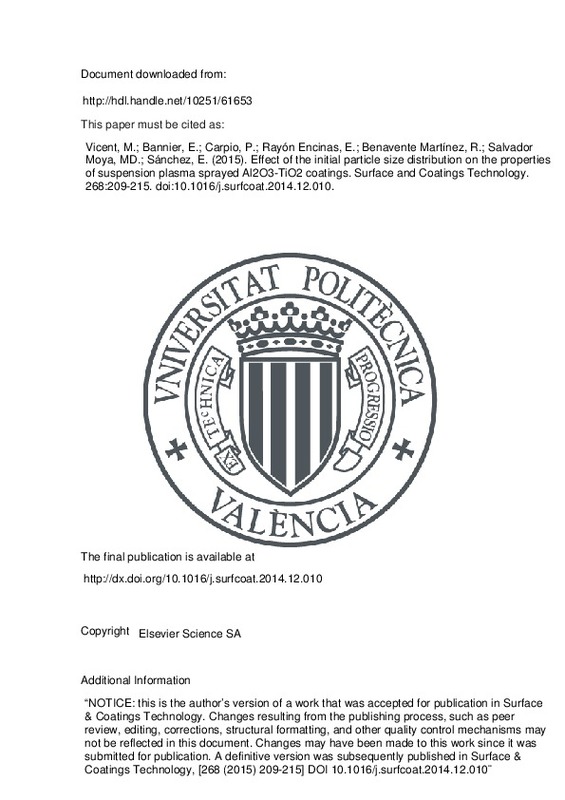JavaScript is disabled for your browser. Some features of this site may not work without it.
Buscar en RiuNet
Listar
Mi cuenta
Estadísticas
Ayuda RiuNet
Admin. UPV
Effect of the initial particle size distribution on the properties of suspension plasma sprayed Al2O3-TiO2 coatings
Mostrar el registro completo del ítem
Vicent, M.; Bannier, E.; Carpio, P.; Rayón Encinas, E.; Benavente Martínez, R.; Salvador Moya, MD.; Sánchez, E. (2015). Effect of the initial particle size distribution on the properties of suspension plasma sprayed Al2O3-TiO2 coatings. Surface and Coatings Technology. 268:209-215. https://doi.org/10.1016/j.surfcoat.2014.12.010
Por favor, use este identificador para citar o enlazar este ítem: http://hdl.handle.net/10251/61653
Ficheros en el ítem
Metadatos del ítem
| Título: | Effect of the initial particle size distribution on the properties of suspension plasma sprayed Al2O3-TiO2 coatings | |
| Autor: | Vicent, M. Bannier, E. Carpio, P. Sánchez, E. | |
| Entidad UPV: |
|
|
| Fecha difusión: |
|
|
| Resumen: |
Al2O3-TiO2 coatings have been deposited by atmospheric plasma spraying from agglomerated, nanostructured powders showing better properties than those of their conventional (microstructured) counterparts. These nanostructured ...[+]
|
|
| Palabras clave: |
|
|
| Derechos de uso: | Reserva de todos los derechos | |
| Fuente: |
|
|
| DOI: |
|
|
| Editorial: |
|
|
| Versión del editor: | http://dx.doi.org/10.1016/j.surfcoat.2014.12.010 | |
| Código del Proyecto: |
|
|
| Descripción: |
|
|
| Agradecimientos: |
|
|
| Tipo: |
|







![[Cerrado]](/themes/UPV/images/candado.png)


